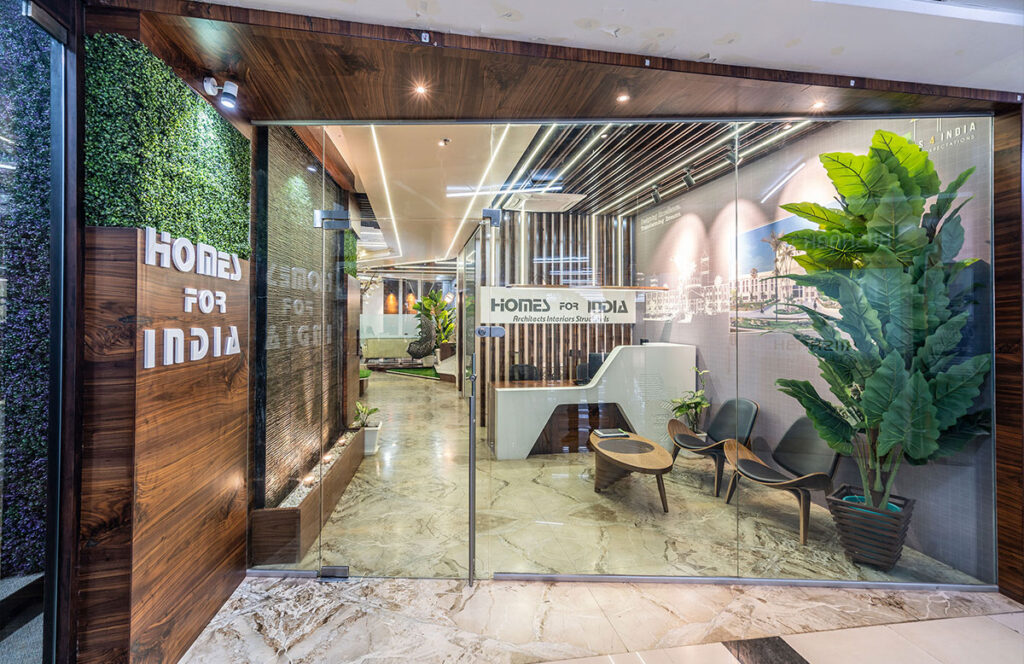Demystifying Vitrified Tiles: A Detailed Guide to Their Meaning, Types, Advantages, and Costs
As an architectural marvel, vitrified tiles have become an integral part of modern home design. These unique tiles are a perfect blend of aesthetics and functionality. In this comprehensive guide by Homes4India, we unfold the realm of vitrified tiles, exploring their meaning, different types, the plethora of advantages they offer, and their cost-effectiveness, providing you with a clear picture of why they are a preferred choice in interior design today.
1. The Essence of Vitrified Tiles

Vitrified tiles are ceramic tiles with extremely low porosity, achieved by vitrification, a process that fuses clay with other elements like silica, quartz, and feldspar at high temperatures. This results in a glass-like, glossy finish which grants these tiles their robustness and versatility. Their unique construction makes them ideal for various spaces in your home.
2. An Insight into the Different Types of Vitrified Tiles

Vitrified tiles come in four major types: double charged, full body, soluble salt, and glazed. Double charged tiles are known for their durability and long-lasting finish. Full body tiles have consistent color and pattern throughout the tile, making them ideal for high traffic areas. Soluble salt tiles are an economical choice, perfect for residential spaces, while glazed tiles offer endless design options.
3. Unfolding the Advantages of Vitrified Tiles

Vitrified tiles offer numerous advantages over traditional flooring options. They are resistant to scratches, stains, and water, making them ideal for both indoor and outdoor use. Their low porosity ensures durability and easy maintenance. The variety of designs, colors, and textures they come in can cater to any design theme, from traditional to contemporary.
4. The Cost Aspect of Vitrified Tiles

While the initial cost of vitrified tiles may seem high, their durability, longevity, and low maintenance make them a cost-effective choice in the long run. The cost varies depending on the type, size, and design of the tile. Despite the price, the value they bring to a space makes them a worthy investment.
5. Vitrified Tiles Vs. Other Flooring Options

When compared to other flooring options, vitrified tiles stand out. Unlike hardwood floors, they are resistant to water and scratches. Compared to natural stone, vitrified tiles offer more design variety and are easier to maintain. Their durability and aesthetics surpass those of regular ceramic tiles, making them a superior choice.
6. The Environmental Impact of Vitrified Tiles

Vitrified tiles have a lower environmental impact than most flooring options. Their long lifespan reduces the need for replacement, and their low maintenance requirements limit the use of cleaning chemicals. Some manufacturers even recycle waste material during production, further reducing their ecological footprint.
7. Installation and Maintenance of Vitrified Tiles

Proper installation is crucial to the performance and aesthetics of vitrified tiles. It’s recommended to have them installed by professionals to ensure accuracy and longevity. Their maintenance is relatively easy and involves regular cleaning with a mild detergent and occasional polishing to maintain their luster.
Concluding Thoughts
Vitrified tiles have emerged as a sought-after flooring solution owing to their stunning appearance, durability, and versatility. By understanding their meaning, types, advantages, and costs, you can make an informed decision for your space, ensuring a timeless and elegant finish.
Frequently Asked Questions on Vitrified Tiles
1. What makes vitrified tiles different from regular tiles?
Vitrified tiles are ceramic tiles made less porous through the process of vitrification. This makes them more durable, resistant to scratches, stains, and water, and gives them a glossier finish compared to regular tiles.
2. Are vitrified tiles suitable for outdoor use?
Yes, due to their low porosity and high durability, vitrified tiles are ideal for both indoor and outdoor use.
3. How do I maintain vitrified tiles?
Maintenance is relatively simple. Regular cleaning with a mild detergent and occasional polishing should suffice.
4. Are vitrified tiles eco-friendly?
Yes, they have a lower environmental impact than most flooring options due to their long lifespan and low maintenance requirements.
5. Do vitrified tiles come in different designs?
Yes, vitrified tiles come in a wide variety of designs, colors, and textures, catering to any design theme.
Why Choose Homes4India for Your Interior Design Needs?

At Homes4India, we create spaces that echo your personality and resonate with your lifestyle. Our experienced designers effortlessly blend functionality and aesthetics to bring your visions to life. When it comes to vitrified tiles, our expertise and vast range will guide you towards the best choice for your space. We invite you to Contact us and begin the journey towards your dream space.
More Blogs on Interior Designs
Vitrified Tiles vs. Granite: Your Comprehensive Guide to Making the Right Choice
A Comprehensive Journey into Terrace Gardening
All pic courtesy: freepik.com & pinterest.com




